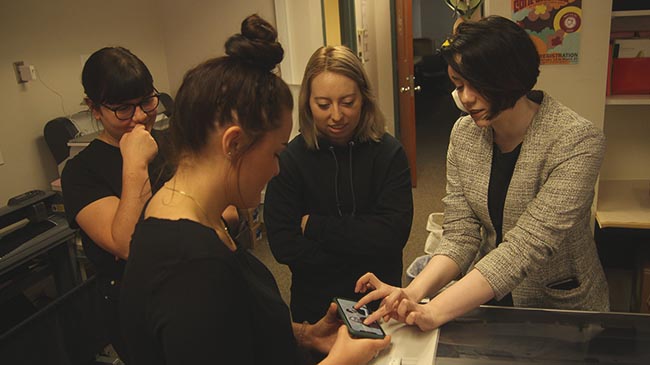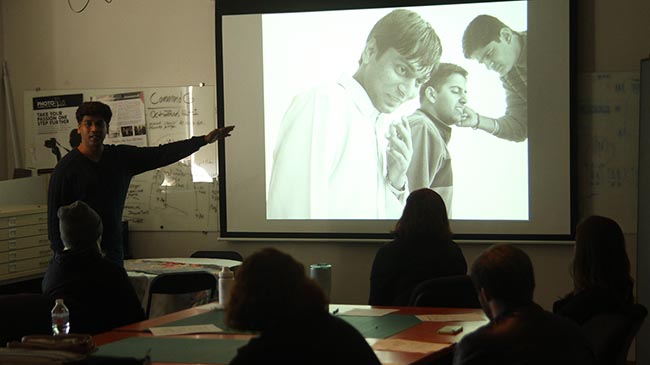By Steven Krolak
(NEW ALBANY, Ind.)–What is design?
Believe it or not, this question has not easy answer, even for designers.
This week, two design experts from India are visiting IU Southeast, and sharing theory and practice from the forefront of the field with IU Southeast students and the public.
They will hold workshops with design students, and the products will be displayed alongside those from IDC students. They will also lead a workshop for the public.
The goal is to help future and current designers better understand what it is they do, and to develop tools for designing more intentionally and impactfully.
Professor Mandar Rane and Associate Professor Purba Joshi teach design in the Industrial Design Center (IDC) School of Design, at the Indian Institute of Technology Bombay in Mumbai, India.
They are respected both for their philosophical approach and their practical successes.
Rane is a communications designer who has developed unique methods for teaching design, so that students’ creativity is liberated from the limitations of the technology they are working with.
Joshi is an industrial designer who aims to improve lives. Her design of a low-cost vein tracker, a medical device, won the Gandhian Young Technology Innovation Award from the President of India.
The pair were invited by Kok Cheow Yeoh, assistant professor of fine arts and graphic design area head, who first met them when he presented as a keynote speaker at Typography Day 2014, in Guwahati, India.
The three share an interest in the perceptual and communicative aspects of the act of design, not for their own sake of but because they can be empowering for practitioners.
“Both of them stress that design is a skill that can be taught and learned,” Yeoh said. “By inculcating a keen sense of observation, participants are taught the way to ‘see’ things within the context of understanding human thoughts and their behaviors.”
For Yeoh and his colleagues, design training is more than learning how to operate electronic equipment. It’s a way of seeing.
“The key to understanding visual language is the aspect of problem-solving, which requires one to investigate, explore, and produce several solutions which are constantly tested for refinement,” Yeoh said. “Through the elements and principles of design such as symmetry for unity and asymmetry for variety, graphic designers create various types of design solutions that serve not only the commerce, but also social, and political arenas.”
In the Visual Order workshop, students in groups of three worked through a series of exercises involving the arrangement of objects in space, received detailed feedback on their in-class efforts, and came to an understanding of how the placement of the objects created relationships that communicated message and meaning.

This is the foundation of visual design, which Mane and Joshi see as based in the way we perceive reality and order thought.
“The brain always wants to process less information,” Mane said. “It wants to be efficient.”
Effective design prioritizes the goal of the client’s desired outcome over subjectivity or taste–the realm of pure art.
“Arranging objects in a visual space has to follow the laws of perception, which are universal and ingrained in us,” Mane said. “It cannot be just my preference, my like, my dislike, because in design, it is the purpose of the communication which should matter.”

For Joshi, the discussion is not merely academic, but existential for designers.
“To gain the trust of clients, you have to logically articulate your rationale,” Joshi said. “If the client says they don’t like it, and you can’t explain your decisions, that’s when you have failed as a practicing designer, and are merely an operator, doing what others want — you’re not actually designing, because it’s not your thought or your expression.”
On Saturday, Oct. 12, Mane and Joshi will conduct a workshop entitled, “Demystifying Design.” This event is a collaboration between the IU Southeast Department of Fine Arts and the IDC. This workshop is open to the public, and aims to help those who plan to work in design, as well as current designers, to define and articulate the term “design” in an age of constant flux. For details, please contact Kok Cheow Yeoh at yeohk@ius.edu.


